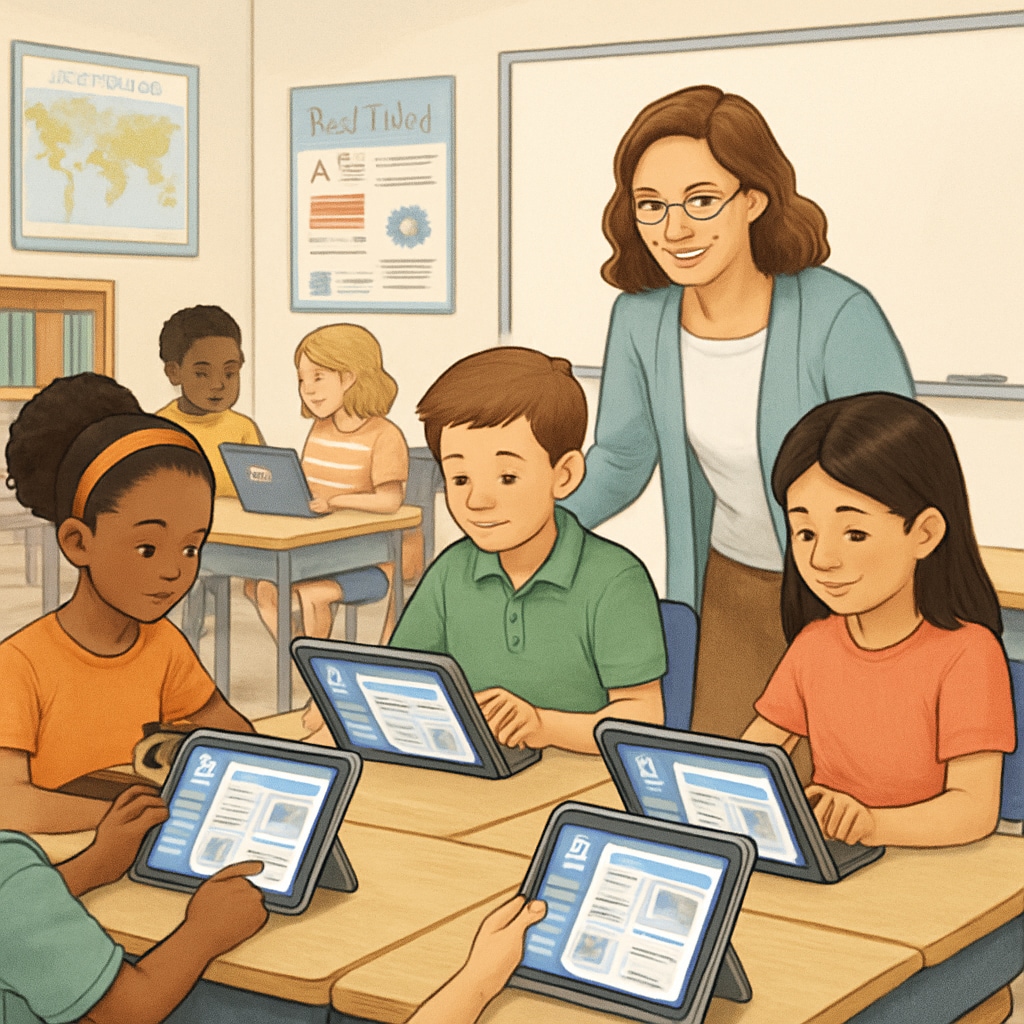Artificial intelligence (AI) is rapidly transforming various sectors, and its impact on education, particularly K12 education, is profound. Over the next 5-10 years, AI is poised to revolutionize classrooms, reshaping how students learn, how teachers teach, and how resources are distributed. As we explore these advancements, it becomes crucial to consider how this technological shift aligns with the fundamental goals of education.
Personalized Learning: A Tailored Approach for Every Student
One of the most significant ways AI will impact K12 education is through personalized learning. AI algorithms can analyze vast amounts of data on student performance, learning styles, and preferences to create customized learning paths. This ensures that each student receives instruction tailored to their specific needs, enabling them to progress at their own pace.
For example, platforms like Khan Academy already use AI to adapt lessons based on individual student performance. In the future, such systems will become even more sophisticated, integrating real-time feedback and predictive analytics to anticipate areas where students may struggle.

Moreover, AI can help identify and address learning gaps early. For instance, if a student struggles with fractions, AI can recommend additional resources or exercises to reinforce the concept, ensuring no student is left behind. This level of customization has the potential to significantly improve educational outcomes.
Redefining the Role of Teachers in an AI-Driven World
While AI offers numerous benefits, it also raises questions about the evolving role of teachers. Rather than replacing educators, AI is likely to augment their capabilities, enabling them to focus on tasks that require human empathy and creativity.
Teachers can leverage AI tools to automate administrative tasks such as grading, attendance tracking, and lesson planning. This allows educators to dedicate more time to fostering critical thinking, nurturing emotional intelligence, and building meaningful relationships with students. According to Britannica, these interpersonal skills are vital in developing well-rounded individuals.

In addition, AI can serve as a valuable co-teacher. For instance, virtual teaching assistants can provide instant answers to student queries, leaving teachers free to focus on more complex or nuanced discussions. This collaborative approach ensures that students receive comprehensive support both from technology and their human instructors.
Equitable Distribution of Educational Resources
AI has the potential to address one of the most pressing challenges in education: the inequitable distribution of resources. By analyzing data on school performance, resource allocation, and student demographics, AI can help policymakers identify underserved areas and allocate resources more effectively.
For example, AI-powered platforms can provide access to high-quality digital textbooks, interactive lessons, and virtual labs, ensuring that students in rural or low-income areas receive the same quality of education as their peers in well-funded schools. Additionally, AI can support multilingual education by offering real-time translation services, breaking down language barriers and promoting inclusivity.
The Challenges and Ethical Considerations of AI in Education
Despite its potential, the integration of AI into K12 education is not without challenges. Issues such as data privacy, algorithmic bias, and the digital divide must be addressed to ensure equitable and ethical implementation. Schools and policymakers must establish robust frameworks to protect student data and ensure transparency in AI-driven decision-making.
Furthermore, while technology can enhance learning, it is essential to remember that education is not solely about academic achievement. The human aspects of teaching—instilling values, fostering curiosity, and encouraging collaboration—must remain central to any educational system.
As we embrace AI in education, we must strike a balance between technological innovation and the preservation of the core principles of learning. By doing so, we can create an education system that not only prepares students for the future but also nurtures their humanity.
Readability guidance: The article uses short paragraphs, subheadings, and lists to improve readability. Active voice is prioritized, while long sentences and passive constructions are minimized. Transition words like “for example,” “in addition,” and “however” are used to maintain a logical flow.


